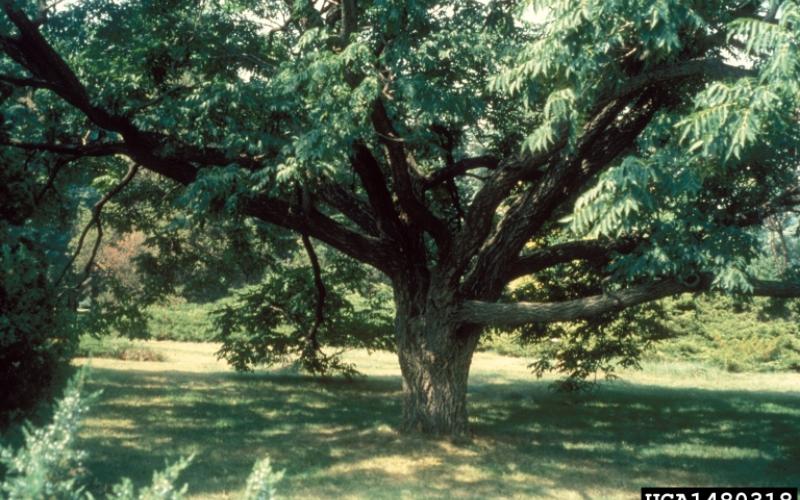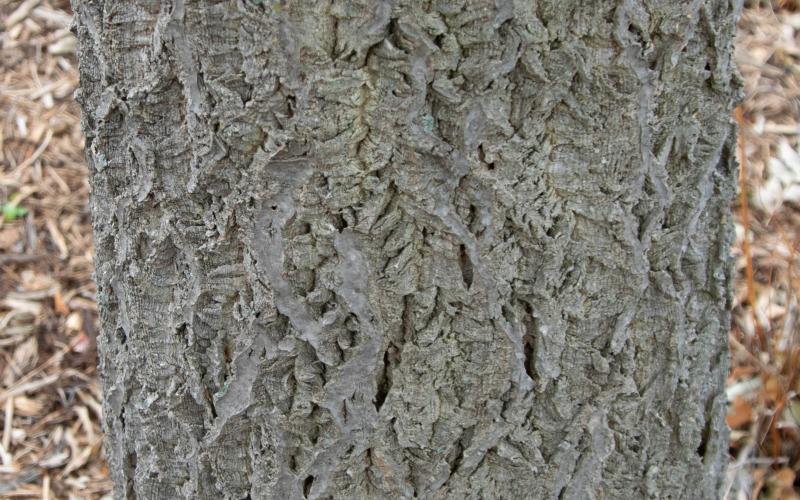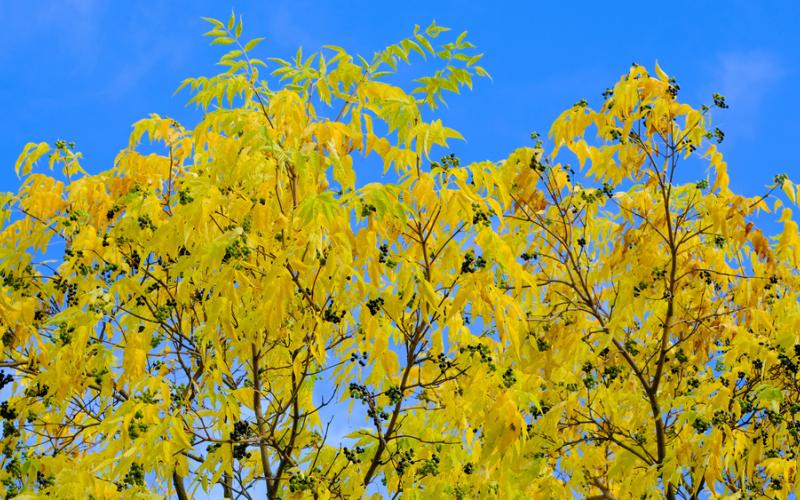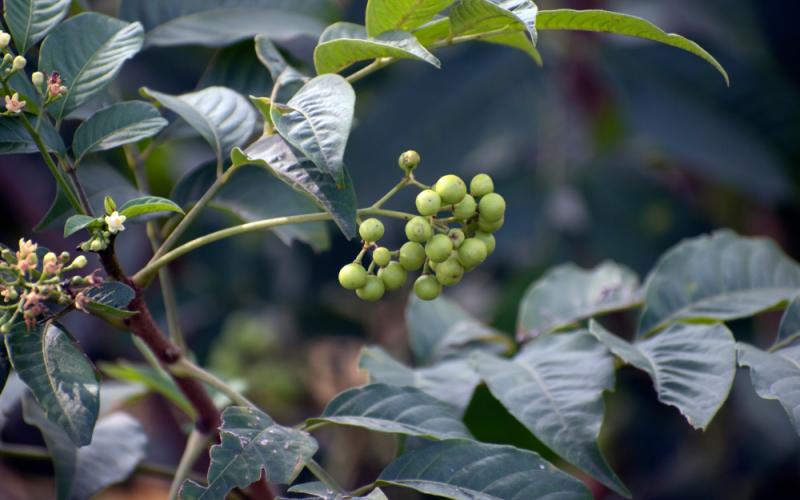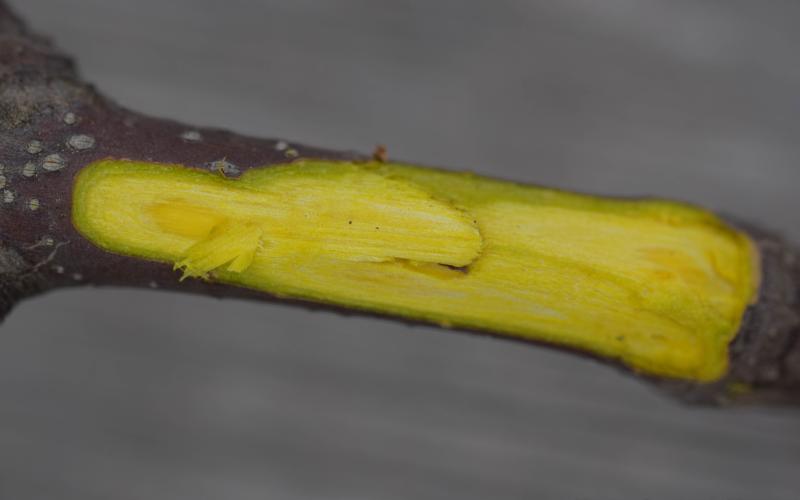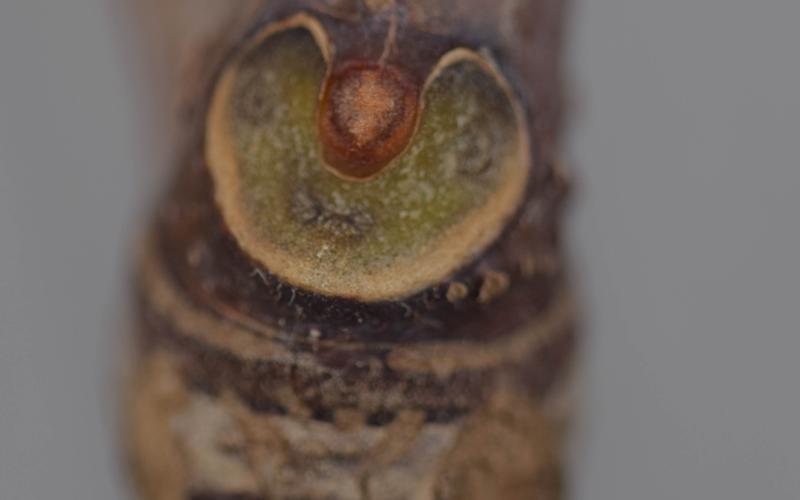Common names: Amur corktree
Scientific name: Phellodendron amurense Rupr.
Legal status
Only sales of the male cultivars of the Amur cork tree are permitted, sales of female cultivars are prohibited. All existing planted and escaped fruit producing trees must be removed or controlled by other means so that no seed is spread.
Background
Originally introduced as an ornamental tree, the Amur corktree was planted in parks, boulevards, and yards. It was first introduced in the 1850’s in the northeastern part of the United States and is now found primarily throughout the Northeast and Midwest. Its native range is northern China, Japan, and Manchuria. It gets its common name from its bark, which is somewhat corky.
Description
- Amur corktree is a deciduous tree that grows 35-45 feet tall. It has a short trunk with spreading branches.
- The bark of Amur corktree is corky or spongy in appearance, with many ridges that have flat tops and deep furrows. The inner bark is a striking bright yellow color.
- The leaves are opposite and compound with 5-11 leaflets. Leaflets are 10-15 inches long and may be somewhat droopy. Leaflets are dark green on the top, and light green on the underside. There is a somewhat silky feel to the underside of the leaflets. Leaves smell like turpentine or slightly citrusy when crushed.
- Leaf scars are horseshoe-shaped with small brown buds inside the “horseshoe.” New growth twigs are opposite, or occasionally appearing sub-opposite and alternate. They are green-brown in color. Old growth twigs are opposite and have distinct raised lenticels. Leaf foliage in the fall is typically a bright yellow.
- Plants are dioecious with male and female flowers on separate plants. Flowers are small; and bloom in clusters of yellowish-green flowers in late spring.
- Female flowers produce fruit containing up to five seeds each. Fruits are pea-sized, bright green, mature to black in October, and may persist through winter. Fruits also smell citrusy.
- Fibrous roots are shallow and spreading.
Habitat
In its native range, it is typically found along the moist soils of the Amur River. It prefers sun but is shade-tolerant and can grow densely in forests. While it prefers moist soils, it can tolerate many soil conditions. It typically invades disturbed woodland habitats including roadsides, forest edges, woodlots, unmanaged areas in urban parks, and forest openings. Because of its shade tolerance, if seed is introduced to mature upland and lowland forests Amur corktrees may grow well and displace native understory species.
Means of spread and distribution
The Amur corktree is highly adaptable to urban environments. It can withstand a variety of soil conditions from acidic to alkaline, and can handle drought, air pollution, and heat. It also tolerates the cold. Female plants produce viable seed, which is eaten by birds, and then spread into nearby areas. These can germinate rapidly. Originally planted as an ornamental species, it has been shown to be invasive in nearby areas. Seed may also be spread by waterways.
Impact
If a female seed tree is present, dense populations of juveniles can establish, outcompeting native understory species. Amur corktree fruit is less nutritious to native wildlife and suppresses hickory and oak populations. At least one variety of Amur corktree believed to be male has produced fruit in various locations.
Prevention and management
- In management of Amur corktrees, it is best to use an Integrated Pest Management approach. Leaves are retained slightly longer than native trees in the fall, so fall may be a good time to survey and locate populations of Amur corktree. Only male cultivars are allowed to be sold in nurseries in Minnesota.
- Whenever possible, female plants should be controlled early, prior to fruiting. If fruit are present when the plant is controlled, plant material should not be removed from the site to avoid the spread of seed.
- Small seedlings can be pulled easily in moist soil.
- Cut stump treatment, girdling, and foliar treatment are all other methods to remove the tree. Herbicide should be selected carefully based on site conditions.
- For chemical control, contact your local University of Minnesota Extension agent, co-op, or certified landscape care expert.
Toxicity
It is allelopathic, releasing chemicals into the soil that can affect growth of nearby plants and soil microbes.
